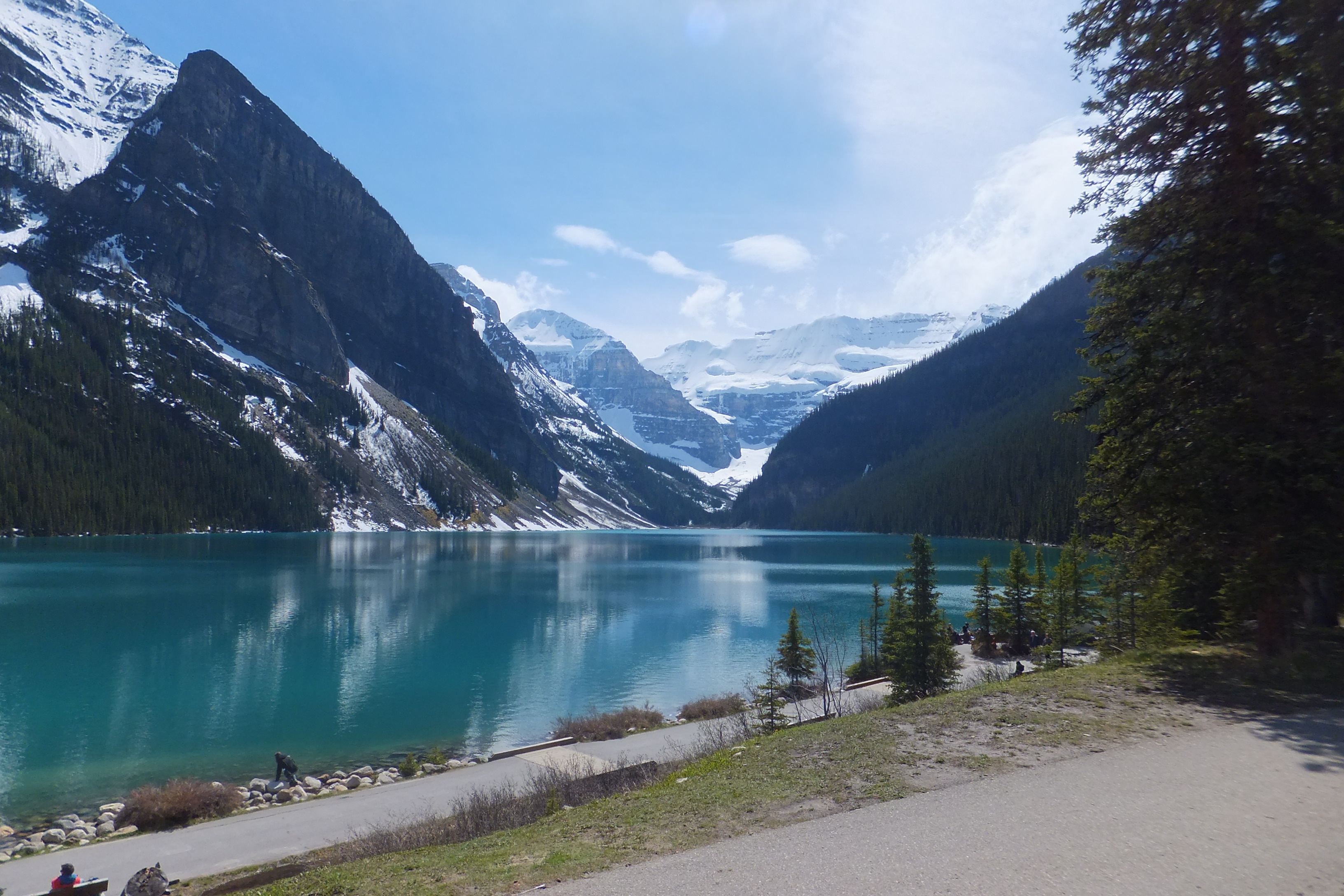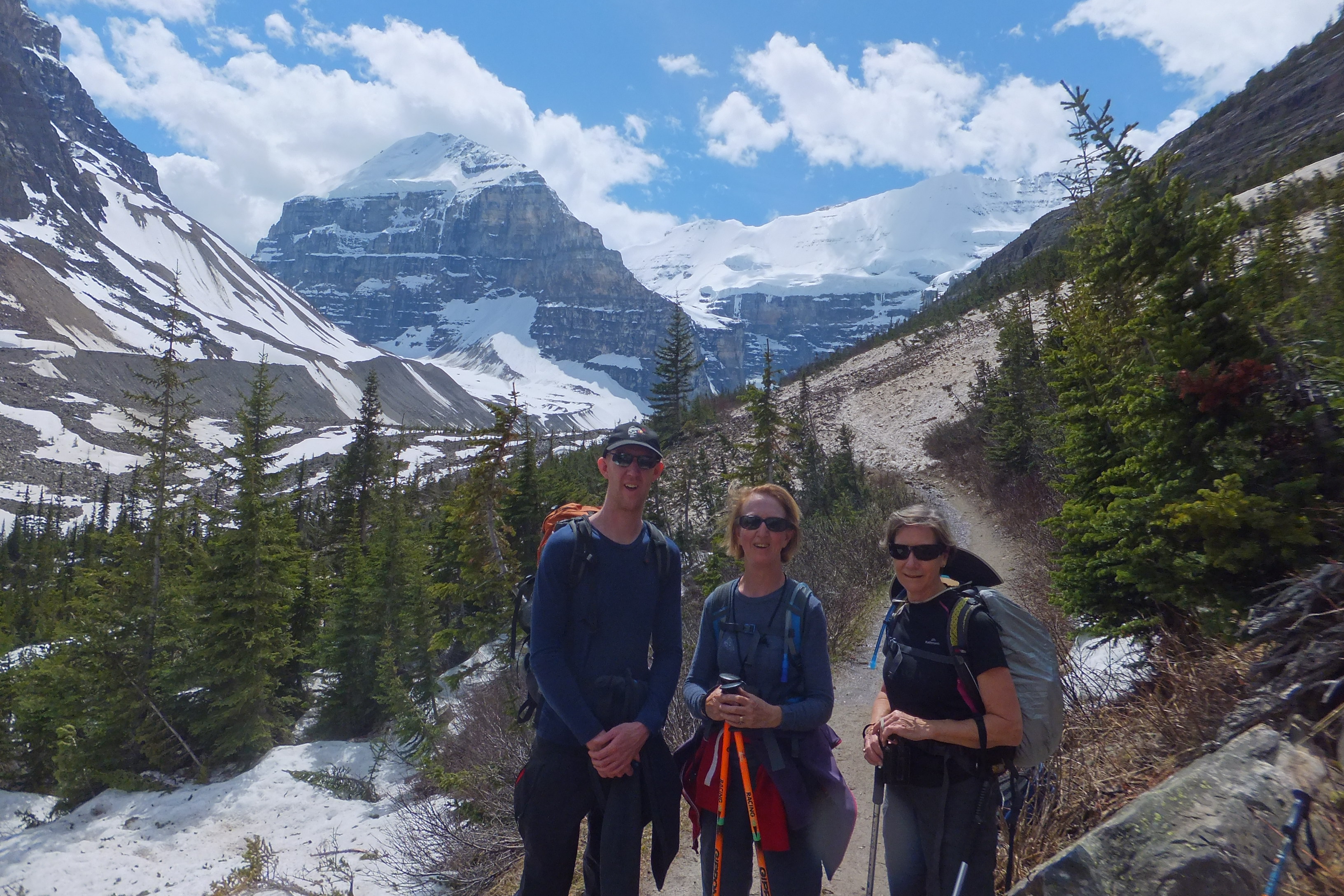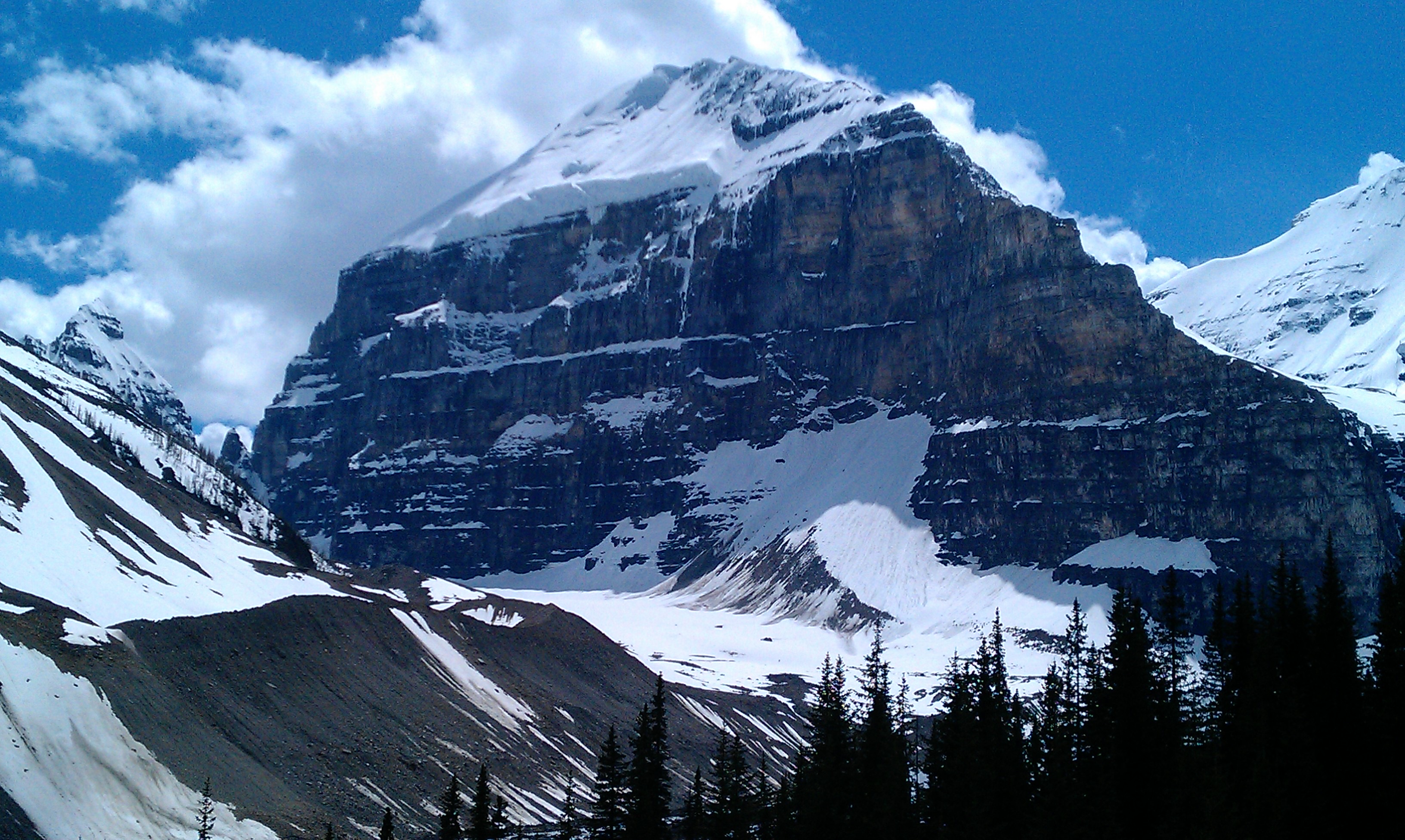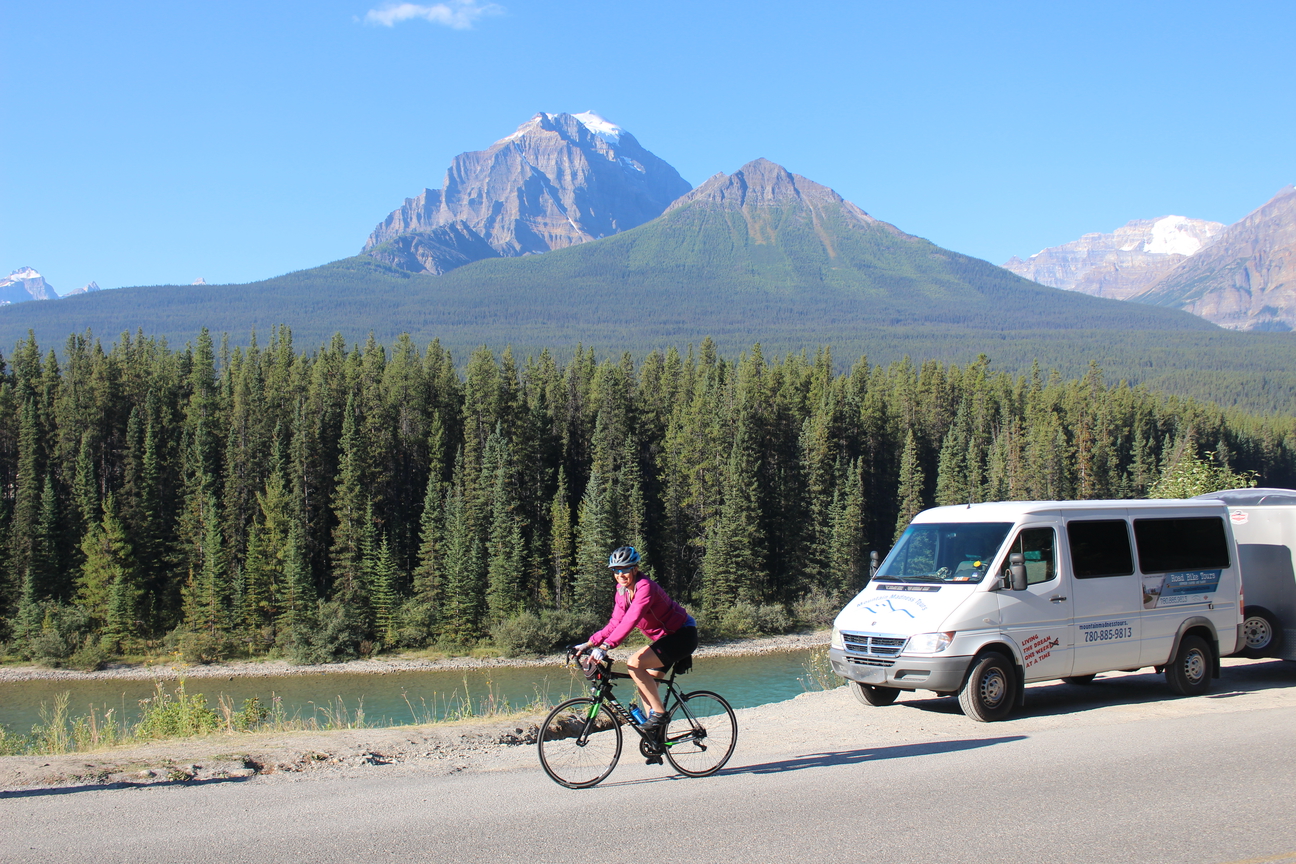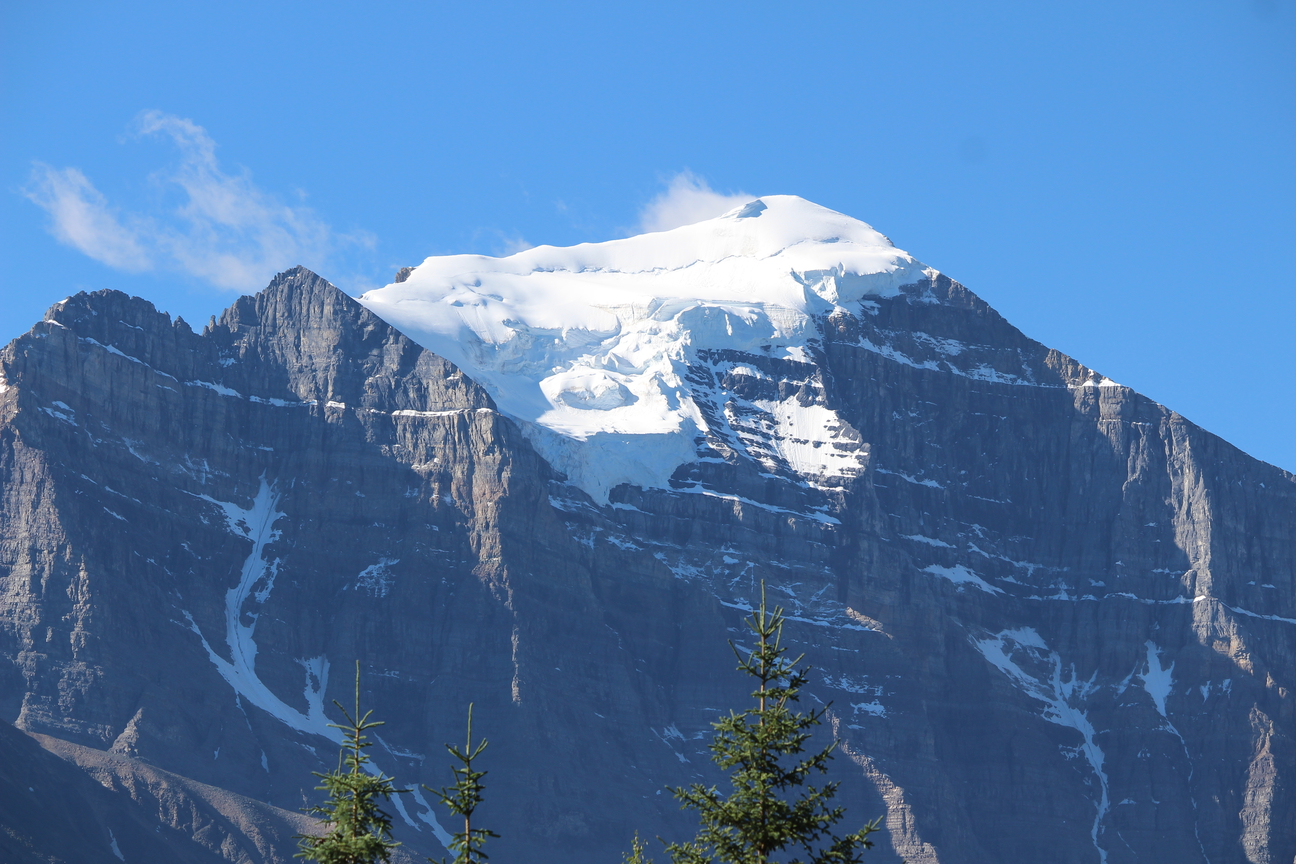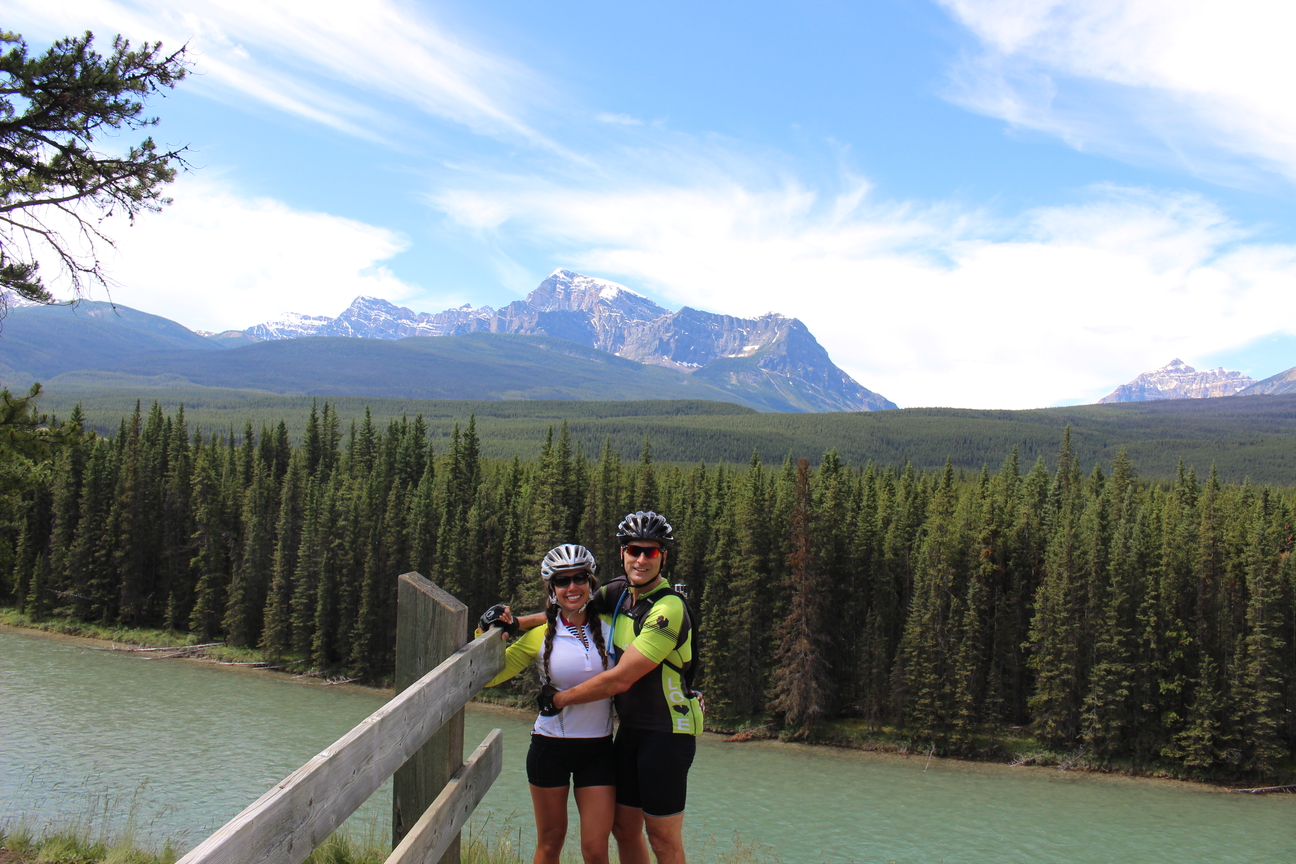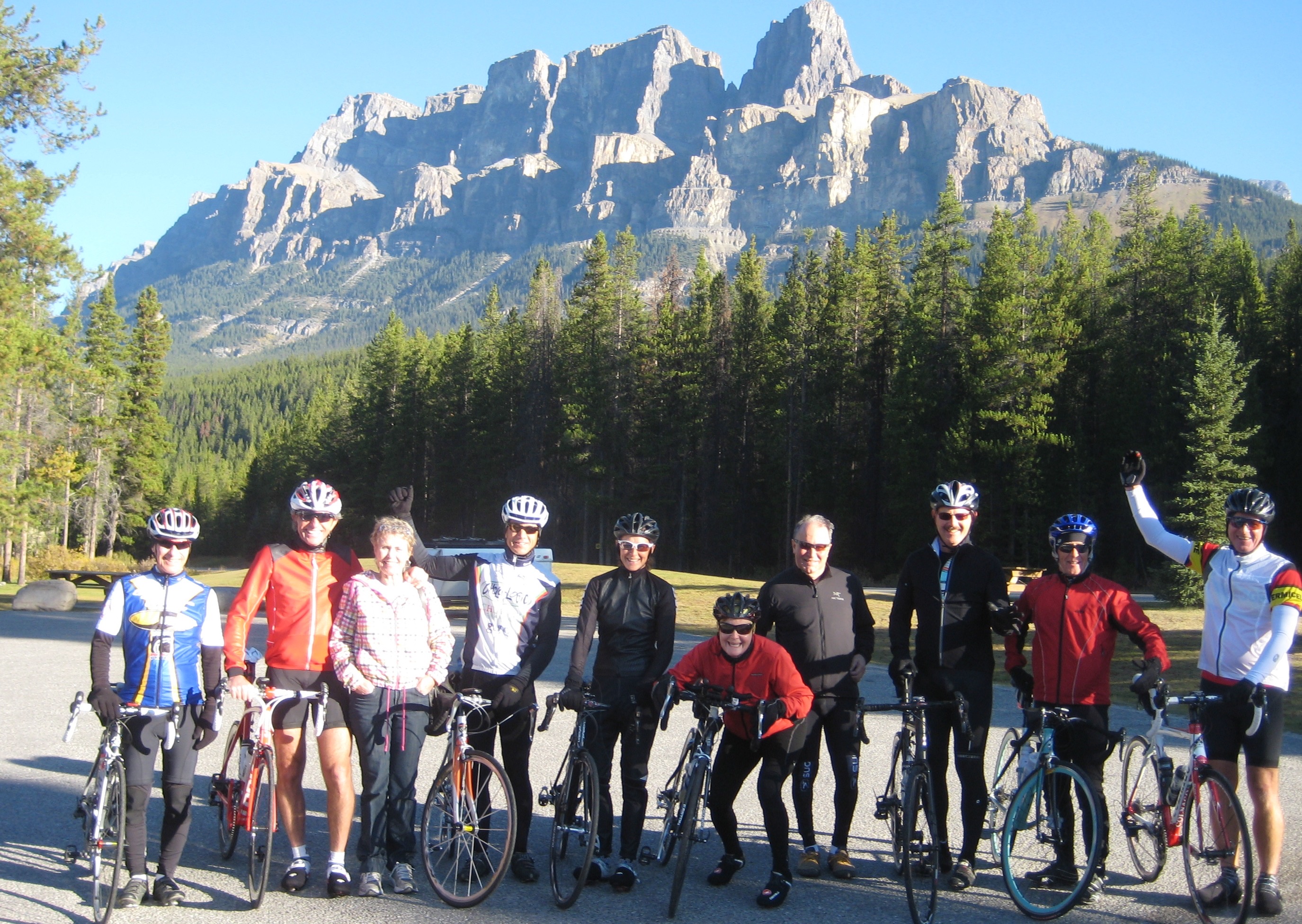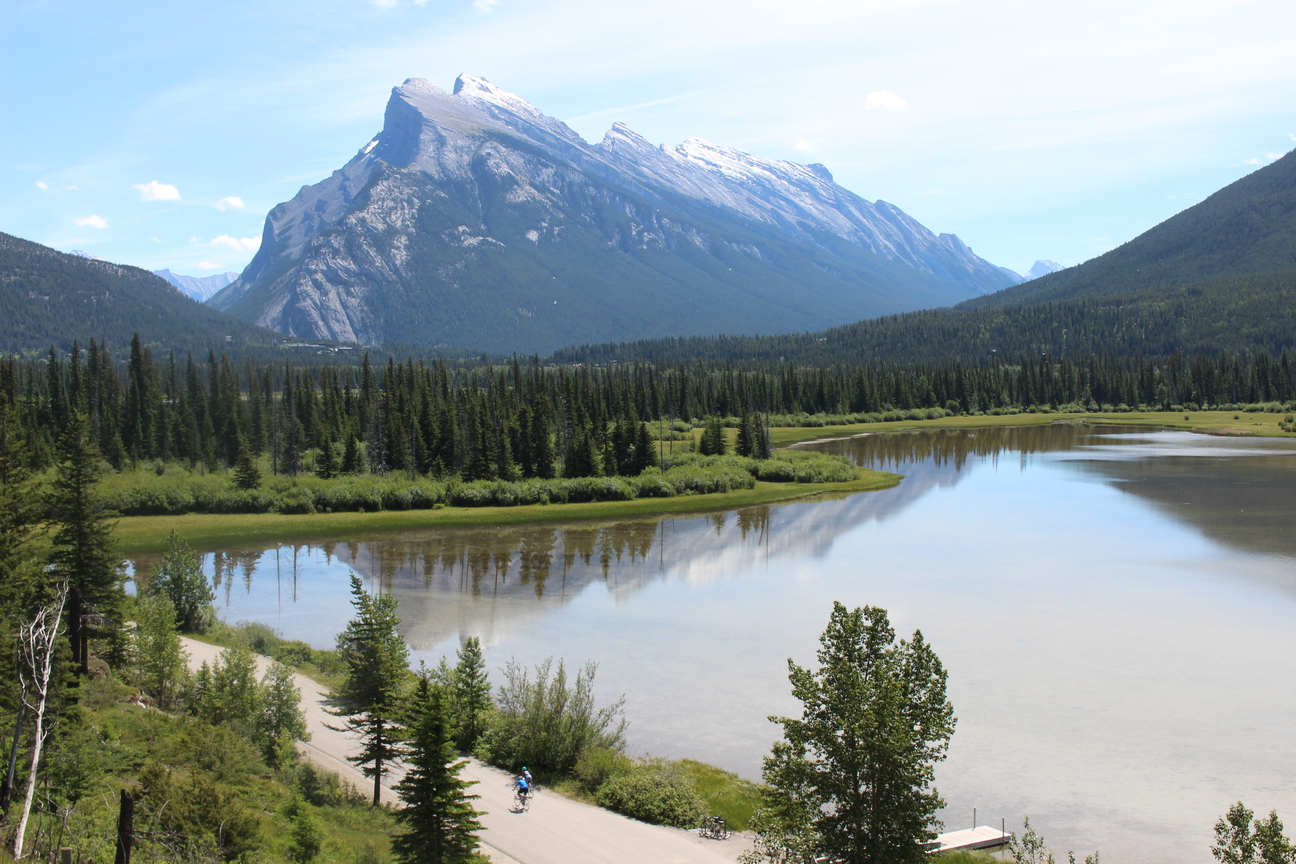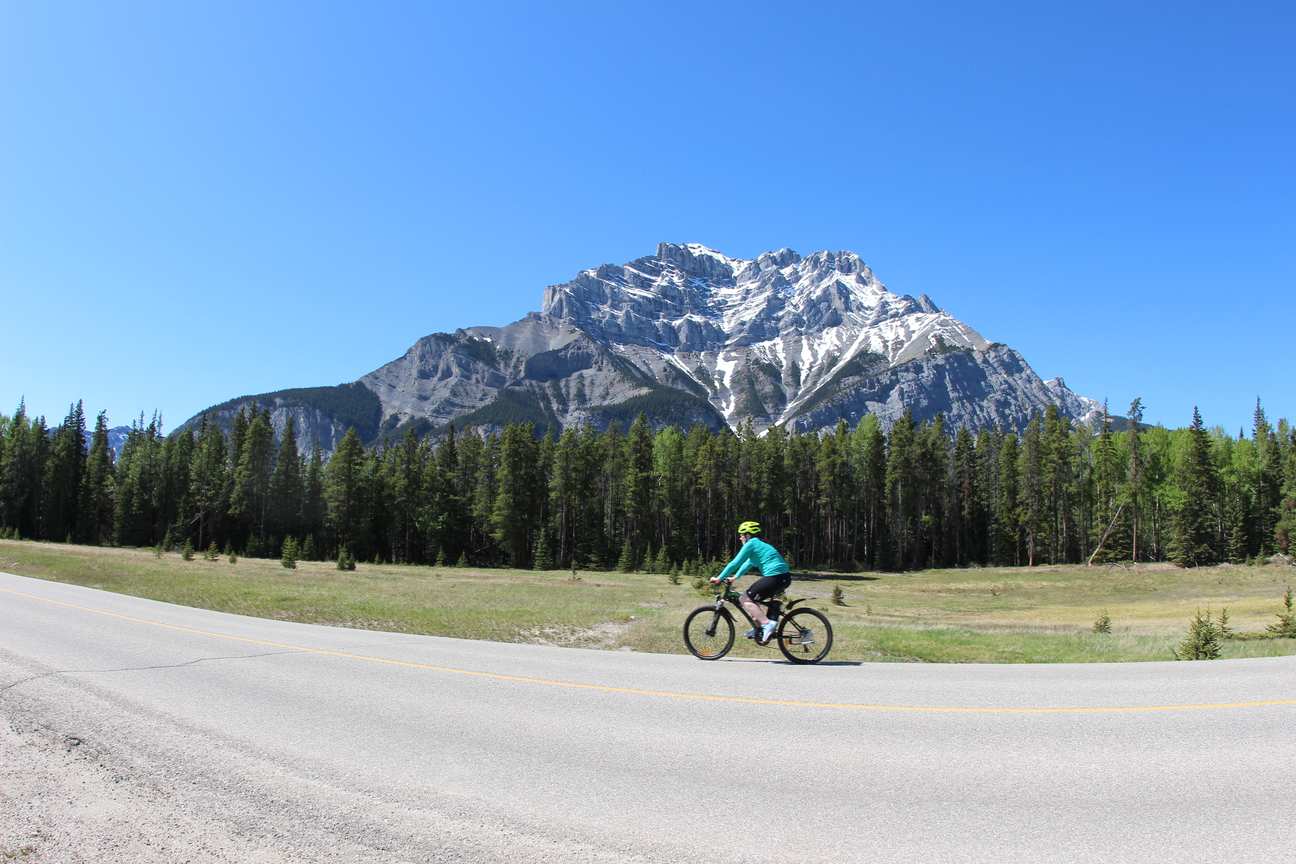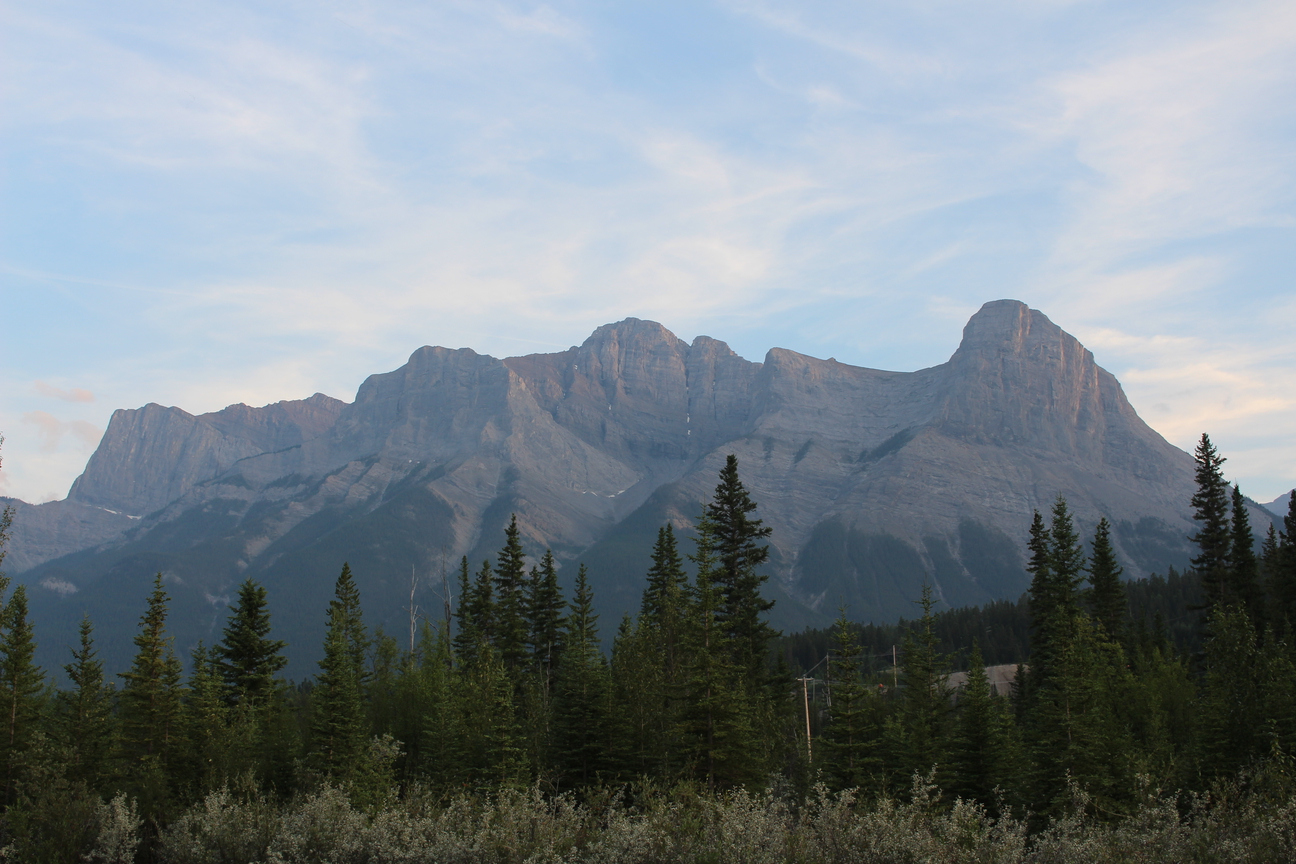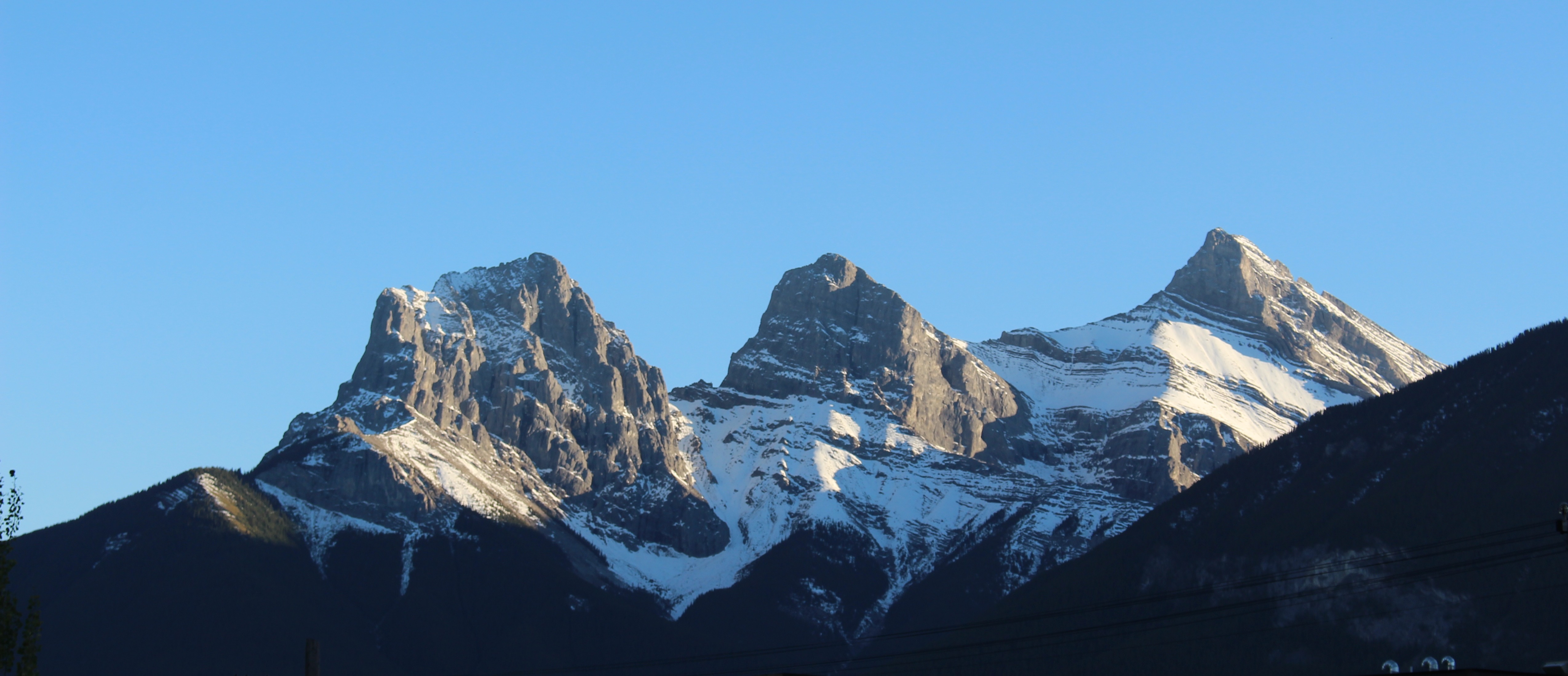“A new world was spread at our feet; to the westward stretched a vast icefield probably never before seen by the human eye, and surrounded by entirely unknown, unnamed, and unclimbed peaks.”
J Norman Collie, 1898
It may be hard to imagine now, but the Columbia Icefield and surrounding peaks have only become accessible within the last century. When J Norman Collie and his climbing companion Hermann Woolley viewed the icefield from the summit of Mount Athabasca in 1898, it was like discovering a whole new world. The area was remote and difficult to reach. There were no roads and no railroads. Fur trade routes and First Nations trails were to the north and to the south. The icefield was in no-man’s land. It’s no wonder Collie believed he and Woolley were first to view the awe-inspiring icefields in 1898.
Since that time, the area has opened to adventurers and explorers and most peaks now have names. Some, in fact, have had several names. This list tells the stories behind the naming of some of the most significant peaks and geographical features along the Icefields Parkway.
Huge thanks to Dave Birrel of www.peakfinder.com for allowing us to borrow content from his amazing website. Please visit this website to find out everything you’d want to know about almost all the Mountains in the Rockies.
This is the final post in a series of 6 posts which all together will cover 60 of the most scenic and interesting mountain peaks that you’ll ride past during the tour. Enjoy!
After leaving the shores of Bow Lake you’ll cycle mostly downhill towards the Mountain Hamlet of Lake Louise. At the end of the Icefields Parkway, we’ll briefly regroup and take a short bike path which will lead to your hotel for the night, Lake Louise Inn. After checking in and cleaning up after your day on the bike we’ll head for an early dinner at the Station Restaurant.
The Station Restaurant is a historic treasure located by the CPR railway line and Bow River tucked away from other Lake Louise visitor amenities.
The station was originally built for the Canadian Pacific Railway in 1910 and is the oldest building in Lake Louise. The station was declared a heritage railway station by the federal government in 1991. Starting in 1909 it was the first of six mountain stations built by the Canadian Pacific in a rustic log building design, consistent with how the railway marketed the region as a wilderness tourist destination.
This gorgeous venue was restored to preserve the character of rustic log walls and leaded windows. Chef Jerry Cook’s contemporary Canadian cuisine is accented with fresh herbs grown on-site.
After an amazing meal we’ll head up to Moraine Lake and Lake Louise before turning in for the night.
In the Stoney language, Lake Louise was called Ho-Run-Num-Nay (Lake of the Little Fishes). In 1884, the lake was named after Queen Victoria’s daughter, Princess Louise Caroline Alberta. Princess Louise was married to John Campbell, who was Governor General of Canada from 1878-1883.
It was briefly called Emerald Lake, a name given by Canadian-born Tom Wilson who was working with surveyors for Canadian Pacific Railway in 1882.
Lake Louise’s beautiful emerald colour comes from finely ground rock flour that is carried by the melt-water primarily from Lefroy Glacier.
2. Mount Victoria 3464m (11365ft.)
After an amazing dinner at The Station Restaurant at the end of the 3rd day of the tour, You’ll have the option to join us for the short drive up to see Moraine Lake then Lake Louise. Apart from the Glacial Green waters you’ll be surrounded by high snow capped mountain peaks.
Mount Victoria is a long, very high ridge featuring two summits one km apart. Together with Mount Lefroy, it forms the backdrop to the view across the lake from the Chateau Lake Louise. The southern peak is the highest, rising from the so called “sickle” to its south. An extensive glacier lies on the steep, eastern slopes facing Lake Louise. During the summer avalanches often tumble into the narrow gorge below and into what is knows as, “The Deathtrap” below.
Both Lefroy and Victoria were first climbed in 1897 by parties which included the first alpine guide to climb in the Canadian Rockies, Peter Sarbach of St. Niklaus, Switzerland. In the case of Mount Victoria, however, Norman Collie led the climb.
Although there is some confusion regarding the placing of the name Mount Victoria on this peak, it seems that it was named in 1897 to honour Queen Victoria who reigned over the British Commonwealth and Empire for sixty-four years until her death in 1901. The mountain had previously been known as Mount Green after Rev. William Spotswood Green, a member of the British Alpine Club who visited the Rockies and the Selkirks in 1888. Green’s book “Among the Selkirk Glaciers,” aroused much interest in the “Canadian Alps” and Green’s visit is said to have marked the birth of mountaineering in Canada. The naming history of nearby Mount Lefroy is a complex one and involves Mount Victoria.
When Green visited Lake Louise in 1888, he was of the opinion that what is now known as Mount Victoria was named Mount Lefroy. In his book, “Among the Selkirk Glaciers,” he wrote, “At the head of the lake the great precipice of Mount Lefroy stood up in noble grandeur, a glacier sweeping round its foot came right down to the head of the lake.” The caption of an accompanying drawing leaves no doubt that Green was referring to what is now known as Mount Victoria.
3. Mount Lefroy 3423m, (11230 ft)
Together with Mt Victoria, Mount Lefroy’s hanging glacier and steep colourful cliffs forms the backdrop to the classic view of Lake Louise from the chateau.
It was named for General Sir John Henry Lefroy who was an astronomer and became the head of the Toronto Observatory. Between 1842 and 1844, he travelled over 8800km in the Canadian North making magnetic and meteorological observations.
It’s steep, western slopes were the scene of Canada’s first mountaineering fatality in 1896.
Phillip Abbot first visited the Canadian Rockies in 1895. With Charles Fay, Charles Thompson and others, he completed the first ascent of Mount Hector. From the summit there were great views across the valley to Mount Lefroy and Abbott seems to have become obsessed with the peak.
On August 3rd of the following year, Abbott, together with Fay, Thompson, and George Little attempted to make the first ascent of Mount Lefroy. As they ascended the final 600m, the steep ice slopes and poor rock became a concern. After leaving the ice to climb on rock, Abbot, who had been leading, asked the others to unrope and wait so that he could advance more easily. A moment later, Little was conscious that something had fallen swiftly past him and knew only too well what it must be. Thompson and Fay, standing at the base of the cliff, saw their dear friend falling backward and head-foremost, strike the upper margin of the ice slope within fifteen feet of them, turn completely over, and instantly begin rolling down it’s steep incline.
Exactly one year after the accident the party reached the summit on a memorial climb requested by Abbot’s father. After a days rest Collie and Sarbach led the party as it completed the first ascent of nearby Mount Victoria.
4. Mount Temple 3544m, (11,627 ft)
As you approach the Hamlet of Lake Louise from the end of the Icefields Parkway, from the Lake Louise Inn where we’ll stay the night and just about anywhere in the Lake Louise townsite the dominant Mountain Peak to the left of Lake Louise and Mount Victoria is the imposing lump of a mountain named Mount Temple.
It was named for Sir Richard Temple by surveyor George Dawson in 1884.
Sir Richard Temple was born to a British country landowner. His maternal grandfather was governor of Bombay. At the age of 18 he joined the powerful East India Company as a writer. He worked as an assistant to the chief commissioner and later as aid to the finance minister. He was eventually promoted as chief commissioner of India’s central provinces. Under his command, an education department and dispensaries were established.
Temple’s administration provided relief from famine in 1874, but he was reprimanded by the British government for “extravagant” spending during the crisis. His dealings with a subsequent famine in 1877 put a blot on his record. Determined to improve his reputation with the British, his meagre interventions resulted in the death of millions. Nonetheless, Temple garnered several awards for his service to the crown, including Knight Grand Cross of the Most Exalted Order of the Star of India and Companion of the Order of the Indian Empire.
Temple visited the Rockies once in 1884 as leader of a field trip with the British Association for the Advancement of Science.
The first ascent of the mountain took place in 1894 and also marked the first mountain over 11 000 feet to be climbed in the Canadian Rockies.
On the last day of the tour we’ll depart Lake Louise, cross the main trans canada hwy and cycle the quiet rolling hills of the Bow Valley Parkway towards Banff. About 30 km or about half way to Banff we’ll have a rest stop at Castle Mountain. Shortly before that rest stop keep an eye out on your right for a view point with amazing views across the Bow Valley to take in Storm Mountain. It’s distinctive shape, colourful cliffs and attractive snow highlights make it a sight to see.
The Mountain was named by Dr. George Dawson due to the summit being shrouded by storm clouds for much of the time that he was working in the area during 1884.
At this stage of the tour you’ll be starting to feel like the tour is rapidly coming to a close and combined with the quiet and relatively flat terrain of the Bow Valley Parkway you’ll likely be in good spirits and happy to see us parked at Castle Mountain Chalets for one last snack stop before we roll into Banff. As you eagerly anticipate one last white chocolate raspberry scone or chocolate covered pretzel don’t forget to look to your right at this amazing Mountain.
Named by James Hector in 1858 for its castle-like appearance, the mountain was renamed Mount Eisenhower in 1946 by Prime Minister Mackenzie-King the day before President Eisenhower arrived in Ottawa to visit. Mackenzie-King’s arbitrary decision so provoked the Alberta government that it established its own geographical names board. In 1979 when Albertan Joe Clark was prime minister, the mountain got its original name back, with the addition of the name Eisenhower Peak to a prominent peak.
At the end of the Bow Valley Trail we’ll be just a few km from the finish line in Banff, but the fun isn’t quite over yet. From here we’ll ride onto the Legacy Trail (a paved bike path which leads into the town of Banff and on to Canmore). As you approach Banff you’ll ride out of the trees and beside Vermillion Lakes for a few km’s. As you ride happily along knowing that you’re just about to complete an amazing journey by bike, you’ll be sure to notice this beauty which rises high above Banff for your visual pleasure.
In 1839, at the age of 28, Robert Terrill Rundle, was hired by the Hudson’s Bay Company to set up Christian missions in its Saskatchewan district. He arrived at Fort Edmonton October 18, 1840. For eight years, from spring to fall, Rundle traveled a circuit visiting First Nations settlements, at first with a guide, but later with only a translator. He learned to speak Cree and translated hymns into that language.
A Cree chief named Maskepetoon who was known for his fierce temper and violence converted to Christianity through Rundle’s efforts. In later years, the Cree Chief was known for his peace-making efforts between warring tribes. In 1857, John Palliser hired Maskepetoon as a guide and expedition members gave him the name Nichiwa, Cree for “friend.” It seems that Palliser credited Maskepetoon’s remarkable reformation to Rev. Rundle’s influence and decided to honour the missionary by naming the imposing mountain after him in 1858.
Mount Rundle is really a small range, with seven peaks that stretch twelve kilometres (7.5 miles) from Banff to Canmore.
For those wanting to finish the ride here in Banff, we’ll pack up the bikes and drive through town before continuing onto the mountain town of Canmore to meet those who decided to take on the optional 25km bonus round on the Legacy Trial bike path. As we drive down Banff ave (the main street of Banff) you’ll notice an impressive mountain dominating the view.
Together with the waterfall, the meadow below it’s southern cliffs made Cascade Mountain a landmark for the natives long before it became the peak most often associated with the town of Banff.
The Stoney people called it “Minihapa” which literally means “Mountain where the water falls.” In 1858, James Hector, translated the mountain’s name to Cascade. The waterfall is spring fed and flows year-round. Hector also noted a “beautiful little prairie” at the base of the mountain. The meadow is now known as Whiskey Creek Meadows.
9. Ha Ling Peak 2408 m (7900 ft)
Even though officially the tour ends in Banff, there is a 25km paved bike path called the Legacy trail between Banff and Canmore to temp you if you’re up for a bonus round. Shortly after you exit Banff National Park on the trail you’ll come to a gem of a mountain town called Canmore. You’ll notice Mt Rundle finally coming to an end on your right (mentioned in a previous post) and you’ll see a nice valley appear which leads to Spray Lakes. On the other side of that valley is an impressive cliff face which leads to Ha Ling Peak.
In October 1896, Ha Ling, a Chinese cook for the Canadian Pacific Railway working at Canmore, climbed to the summit of this peak to win a $50 bet. He made the ascent and return in about five and a half hours, leaving a flag at the top. But Ha Ling couldn’t collect his money until he led doubters back to the summit the next day and showed them the flag he’d planted.
Regrettably, it wasn’t until 1997 that the peak was named in Ha Ling’s honour. An
embarrassing hundred years of contention over the peak’s name followed Ha Ling’s first ascent. Locally, the peak was called “Chinaman’s Peak,” an offensive moniker that persisted and was even registered as the official name in 1985. It took a concerted effort by Albertans of Chinese ancestry to have the name officially changed to honour Ha Ling.
While the name Ha Ling may seem out of place compared to the mostly European names given to the peaks in the Canadian Rockies, a peak with a name of Chinese origin shouldn’t be surprising. Many Chinese immigrants were in western Canada by the end of the 19th century. Some had been lured by the gold rush in the 1850’s and more arrived in the 1880’s to work as labourers on the Canadian Pacific Railway (CPR), just as Ha Ling had done.
Ha Ling Peak is a peak on the larger mountain, Mount Lawrence Grassi. Mount Lawrence Grassi was named after Lawrence Grassi, a prominent citizen of Canmore. Grassi arrived in Canada from Italy in 1912 and worked as a labourer for the CPR. Later he settled in Canmore and worked in the mines. He was an avid climber and explorer who completed many solo climbs and first ascents. He contributed much to the Canmore area, and other places in the Canadian Rockies, through his tireless trail-building efforts. You can still enjoy his handiwork at places like Lake O’Hara, where Grassi spent much time as a park warden. If you’re headed for Abbot’s Pass, watch for Grassi’s solid rock steps and stepping stones. Grassi’s work is also apparent along Lake O’Hara’s lakeshore.
As we pack up your bikes and gear into the van and trailers at the Travel Alberta Visitor’s Centre, you’ll be soaking up the afternoon sun and taking in the impressive view of Mountains that overlook Canmore. To your left you’ll notice three peaks in a row called the Three Sisters.
This famous mountain overlooking Canmore was passed over and left unnamed by the Palliser Expedition’s James Hector in 1858, although he noted in his journal that the three peaks formed a “very imposing group.”
Major Albert Bowman Rogers was an American surveyor hired by the CPR to locate passes through the Rocky and Selkirk Mountains. It was his nephew and namesake, another Albert Rogers, who, noticing the three peaks covered in a heavy view of snow one morning in 1883 called them the “Three Nuns.” The name was changed by George Dawson in 1886 to Three Sisters.

